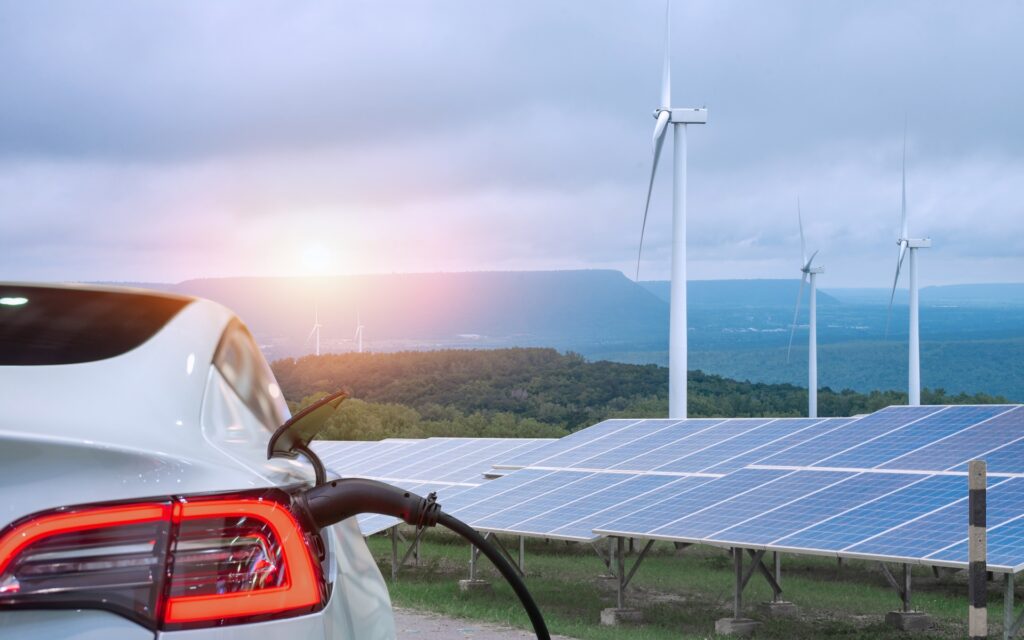Electrification Expansion: What it takes to be an electrician in this booming market
Most electrical contractors have been working with the same technology for a long time. They know what they are doing, how to be safe, and how to troubleshoot issues; they have experience. But what happens when that technology changes?
Circuit breakers are becoming smarter and have monitoring and on-demand controls. Nanogrids, which combine solar and battery storage, are gaining popularity as a way to keep critical appliances running during a power outage.
People also purchase electric vehicles (EVs) and want to charge them at home with a Level 2 Charging Station. These are just examples of how the electrification movement is changing the skills required to be an electrician.
What is the electrification movement?
The electrification movement is the societal change in the way our technology is powered. We are changing the appliances in our homes and the vehicles we drive, and we are switching from fossil fuels to electricity. There is also a shift in how we create electrical power, toward relying on renewable sources such as wind and solar.
The number of battery installations in the residential, commercial, and utility markets has rapidly increased. New devices, new power sources, and new battery types also communicate with each other to run as efficiently as possible. Each area has its training and safety considerations to take into account, which we will briefly discuss.
Renewable energy
Renewable energy is one of the fastest-growing fields in the world. It includes wind power, solar power, and battery storage, which are becoming common in our communities. The number of wind turbine electricians, the fastest-growing profession in the US right now, is expected to grow a staggering 68.2% between 2020 and 2030, with PV installers close behind in third place.
Renewable energy is different from what a residential electrician is accustomed to. Renewable energies create direct current (DC) power instead of the alternating current (AC) used in homes and offices.
Their voltages are also much higher than the standard 240V service entrance we see on most homes. Solar power, as an example, operates at voltages as high as 2000V. Solar power plants that utilize trackers will also have programmable logic controllers (PLCs) onsite, which will need calibration and troubleshooting.
Renewable power plants have monitoring equipment onsite with weather stations, sensors, and wireless modems. These components send information to the Data Acquisition System (DAS) or, in systems with remote control features, to a Supervisory Control and Data Acquisition (SCADA) system.
Residential solar systems are an excellent option for homeowners who own EVs and charge them at home to offset the increased energy usage. It is estimated that by 2050, there will be a 38% higher demand for electricity from EVs alone.
Plenty of work is available in this expanding market with plenty more to come, and now is the time to invest in the training you need to become a market leader in this category.
Battery storage
Since the sun does not shine at night and the wind is not always blowing, we need a way to store the energy these methods produce for later use. To fill this need, batteries are installed, smaller ones in homes to keep the lights on during an outage, and much larger ones in battery farms that support the entire grid. Along with the challenges of higher direct voltages and communication in renewable energy, utility-scale batteries also require fire suppression and cooling systems.
Batteries are being installed at a rapid pace for many reasons. Understanding these reasons and how they affect the type of battery your customers will need for their use case will set your team apart from your competitors.
Smart panels and EVs
People are switching from gas-powered vehicles to EVs at a staggering rate. EV sales increased https://www.energy.gov/energysaver/articles/new-plug-electric-vehicle-sales-united-states-nearly-doubled-2020-202185% from 2020 to 2021. After purchasing, most people want to charge their EVs at home. They typically opt to have a Level 2 Charging Station installed to support faster charging, as Level 1 charging that comes with an EV is inadequate for most people’s use.
A new dedicated circuit breaker will need to be installed to accommodate EV charging. While making this upgrade, customers might choose to use a smart panel, which allows them to monitor the energy used by each circuit and prioritize circuits (to ensure the EV is fully charged for the daily commute).
Your customers are likely unfamiliar with the technology and will need some training to control the installed systems. This means you must also be able to set up, troubleshoot, and train them on the communications required.
The next generation of EVs will also have bidirectional charging capabilities, so an owner can use the battery in their EV to power their home. Bidirectional charging is one of the most anticipated features in newer EVs, and to take advantage of it, your customers will need additional equipment installed.
The IoT and smart homes
The IoT, or Internet of Things, is what is behind smart homes. There is an expected $99 billion market in smart home technologies such as internet protocol (IP) cameras, robot cleaners, smart thermostats, security systems, and other appliances can now be controlled via a smartphone or smart speaker.
For all of these gadgets to work, they must be able to communicate with the internet and each other. Most homeowners lack the knowledge or skills to set such a system up and will look for trained professionals to help. Qmerit can provide electrical contractors with training and support on the various communication platforms in the market.
What does this mean for electrical contractors?
All of this technological progress provides an opportunity for electrical contractors to specialize in one or more areas of the electrification revolution. According to Insider, employment for electrical contractors is expected to increase 9.1% between 2020 and 2030.
This increase pales in comparison to the expected need for specialized workers in renewable energy fields. The work is out there and more is coming, but trained and certified installers are needed to take on these jobs.
How to get into these emerging markets
The emerging energy and technology markets require electrical contractors to have specialized training and equipment to seize available opportunities.
Familiarity with communication protocols and component connectivity is a must for working with smart devices found in all areas of this movement. Higher voltages in renewable energies have a higher risk of arc flash, and more robust protective clothing will be needed. Knowing smart panel capabilities and how they interact with EVs will be critical to supporting your customers when they purchase a new EV.
Qmerit can help
If you have not done so already, now is the time to join our Qmerit Certified Solutions Partner (CSP) Program to get a piece of the electrification solutions business. Qmerit’s CSP program also comes with tools and designated coaches to help grow your workforce and train your team in the latest electrification technologies. To learn more about the Qmerit CSP Program, contact us today.

Lowry Stoops
President, Qmerit Network
This content was originally published here.




